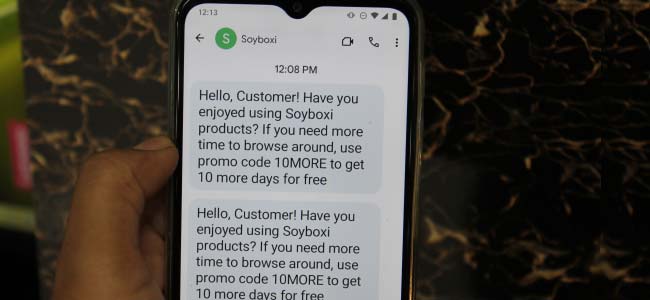Working of Mobile Advertising
Mobile advertising works by displaying ads on mobile devices in various formats, including banners, videos, interstitials, and native ads. The ads are typically delivered through mobile ad networks or directly from advertisers to publishers. Mobile ad networks are platforms that connect advertisers with publishers, allowing advertisers to place ads on multiple mobile apps or websites.
Mobile Ads: are typically targeted based on various factors, including demographics, location, device type, and browsing behavior. Advertisers can use data from mobile devices, such as GPS location data and browsing history, to deliver more personalized and relevant ads to users. This allows advertisers to reach their target audience more effectively and increase the likelihood of engagement and conversion.
Types of Mobile Advertising
-
In-App Advertising
In-app advertising involves displaying ads within mobile apps. In-app ads can be delivered in various formats, including banner ads, interstitial ads, native ads, and rewarded video ads. In-app advertising is a popular mobile advertising channel as it allows advertisers to reach their target audience in a contextually relevant environment.
-
Mobile Web Advertising
Mobile web advertising involves displaying ads on mobile-optimized websites. Mobile web ads can be delivered in various formats, including banner ads, interstitial ads, and native ads. Mobile web advertising is a popular mobile advertising channel as it allows advertisers to reach a broad audience across multiple mobile devices.
-
SMS Advertising
SMS advertising involves sending text messages to mobile devices to promote products or services. SMS ads are typically delivered as part of a larger marketing campaign and can be used to send time-sensitive offers. SMS advertising is a highly effective mobile advertising channel as it has a high open rate and can be used to deliver personalized messages.
-
Mobile Video Advertising
Mobile video advertising involves displaying video ads on mobile devices. Mobile video ads can be delivered in various formats, including pre-roll ads, mid-roll ads, and post-roll ads. Mobile video advertising is a highly engaging mobile advertising channel as it allows advertisers to tell a story and capture users' attention towards them.
Benefits of Mobile Advertising
Mobile advertising offers several benefits for businesses, including:
🟆 Increased Reach: Mobile advertising allows businesses to reach a broad audience across multiple mobile devices.
🟆 Targeted Advertising: Mobile advertising allows businesses to target their audience based on various factors, including demographics, location, device type, and browsing behavior.
🟆 Improved Engagement: Mobile advertising offers several engaging ad formats, including video ads and interactive ads, that can capture users' attention and increase engagement.
🟆 Measurable Results: Mobile advertising allows businesses to track the performance of their ads and measure their ROI.
📝In conclusion, mobile advertising is a highly effective marketing channel that allows businesses to reach and engage with their target audience effectively. By leveraging various mobile advertising channels, including in-app advertising, mobile web advertising, SMS advertising, and mobile video advertising, businesses can create effective mobile advertising campaigns that drive engagement and improve their ROI. It is essential for businesses to understand their target audience and choose the mobile advertising channels that best fit their business goals and objectives.
Ensuring for Mobile Marketing Campaign is Compliant with Regulations
In this article, we will discuss some best practices to ensure that your mobile marketing campaign is compliant with regulations.
-
Get Consent:
Getting consent from users is crucial in mobile marketing. The General Data Protection Regulation (GDPR) and the California Consumer Privacy Act (CCPA) require companies to obtain explicit consent from users before collecting and using their personal data. This means that companies need to provide clear and concise information about the data they are collecting and how they will use it, and users must opt-in to provide their consent.
To ensure compliance, companies need to obtain consent from users before sending them marketing messages. This can be done through opt-in forms or checkboxes that ask users if they would like to receive marketing messages. Companies must also provide an option to opt-out of receiving marketing messages at any time.
-
Follow TCPA Guidelines:
The Telephone Consumer Protection Act (TCPA) is a federal law that regulates telemarketing calls and text messages. The TCPA requires companies to obtain prior express written consent from users before sending them marketing text messages. Companies must also provide an easy opt-out mechanism to allow users to stop receiving marketing messages.
To ensure compliance with TCPA guidelines, companies should maintain a record of the users who have given consent to receive marketing text messages. Companies should also include an opt-out mechanism in their text messages and remove users who opt-out from their marketing list promptly.
-
Comply with CAN-SPAM Act
The Controlling the Assault of Non-Solicited Pornography And Marketing (CAN-SPAM) Act is a federal law that regulates commercial emails. The CAN-SPAM Act requires companies to include an opt-out mechanism in their emails, provide accurate sender information, and provide clear and concise subject lines.
To ensure compliance with the CAN-SPAM Act, companies should ensure that their emails contain accurate sender information and clear subject lines that reflect the content of the email. Companies should also provide an opt-out mechanism that allows users to unsubscribe from their email list promptly.
-
Avoid Deceptive Advertising:
The Federal Trade Commission (FTC) regulates deceptive advertising practices, including mobile advertising. Companies should ensure that their mobile ads are truthful, accurate, and not misleading. Mobile ads should not make false claims, and they should not use deceptive tactics to attract users.
To ensure compliance with FTC regulations, companies should review their mobile ads thoroughly and ensure that they are truthful, accurate, and not misleading. Companies should avoid using deceptive tactics such as fake countdown timers, fake awards, and fake reviews to attract users.
-
Be Transparent:
Transparency is crucial in mobile marketing. Companies should be transparent about the data they are collecting, how they are using it, and who they are sharing it with. Companies should also provide clear information about their marketing practices and the types of marketing messages they will send to users.
To ensure compliance with transparency regulations, companies should provide clear and concise information about their data collection and marketing practices. This can be done through a privacy policy that outlines the data they collect, how they use it, and who they share it with. Companies should also provide clear information about their marketing practices and the types of marketing messages they will send to users.
Ensuring compliance with regulations is crucial in any marketing campaign, and mobile marketing is no exception. Mobile marketing campaigns need to comply with various laws and regulations to avoid legal and financial penalties and maintain a good reputation.
Mobile Marketing Improves Customer Engagement and Loyalty
Mobile marketing can be a powerful tool for improving customer engagement and loyalty. With the increasing use of mobile devices, customers are more likely to engage with brands through mobile channels, and companies can leverage this trend to create more personalized and targeted marketing campaigns that build customer loyalty.
In this article, we will discuss some strategies for using mobile marketing to improve customer engagement and loyalty.

-
Personalization:
Personalization is a key strategy for engaging customers through mobile marketing. By tailoring marketing messages to the individual preferences and behaviors of customers, companies can create a more relevant and engaging experience that builds loyalty.
One way to personalize mobile marketing is by using customer data to create targeted marketing messages. For example, companies can use data such as purchase history, browsing behavior, and demographic information to create personalized product promotions. By sending messages that are relevant to customers' interests, companies can increase engagement and build loyalty.
-
Loyalty Programs:
Loyalty programs are another effective strategy for building customer engagement and loyalty through mobile marketing. By offering exclusive rewards and incentives to customers who make repeat purchases of items or products, many companies can incentivize customers to continue engaging with their brand.
Mobile loyalty programs can be particularly effective, as they allow customers to easily track their rewards or incentives and redeem them through their mobile device. By creating a seamless mobile experience for loyalty program members, many companies can increase engagement and build loyalty.
-
Push Notifications:
Push notifications are another effective tool for engaging customers through mobile marketing. By sending targeted messages to customers' mobile devices, companies can create a sense of urgency and encourage customers to take action.
However, it's important to use push notifications strategically, as overuse can lead to customers disabling notifications or even uninstalling the app. Companies should ensure that their push notifications are relevant, timely, and personalized to the individual customer.
-
Social Media Integration:
Social media integration is effective strategy for engaging customers through mobile marketing. By integrating social media into mobile marketing campaigns, companies can create a more engaging and interactive experience for customers.
For example, companies can encourage customers to share their experiences on social media by offering incentives or creating a branded hashtag. By creating a sense of community around their brand, companies can increase engagement and build loyalty.
-
Interactive Content:
Interactive content is another effective strategy for engaging customers through mobile marketing. By creating interactive experiences such as quizzes, games, or surveys, companies can create a more engaging and memorable experience for customers.
Interactive content can also be used to collect customer data and feedback, which can be used to improve future marketing campaigns and build loyalty.
